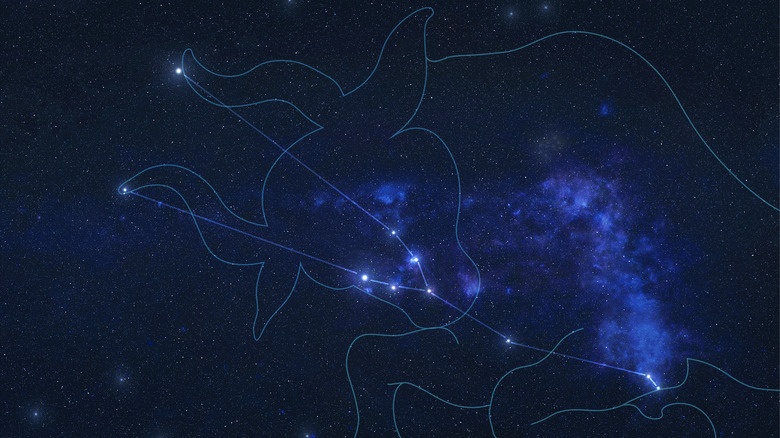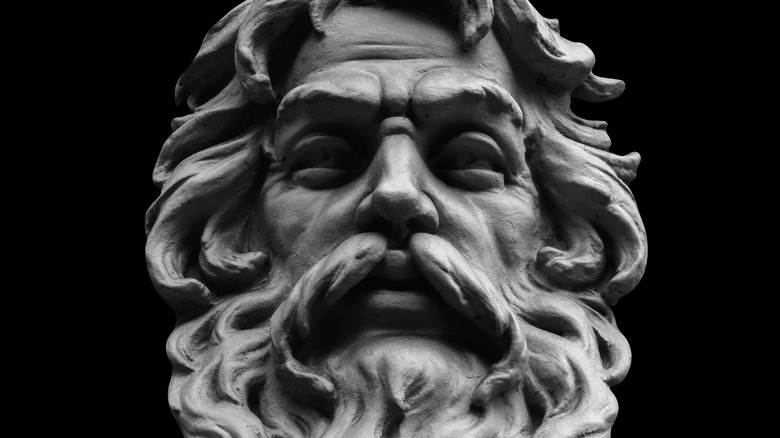The Mythology Behind The Taurus Constellation Explained
Over the shoulder of the hunter Orion, the bull Taurus is visible along the ecliptic (that is, the path of the sun) in winter and spring, between Aries and Gemini (via EarthSky). You may know it as the second sign of the zodiac, the home of the Pleiades, or as the astrological sign that supposedly births the most serial killers, but what does it mean?
It turns out that there are many myths associated with Taurus. The Native Zuni tribe of New Mexico called the Pleiades — the bright star cluster on the bull's back — "seed stars," according to EarthSky. They would plant after the stars had disappeared over the horizon in early spring, when the danger of frost had passed. And the Celtic peoples of Western Europe used the rise of the Pleiades in autumn to mark a festival of the dead — what became Halloween, according to Smithsonian Magazine.
Even within ancient Greece, the bull assumes different identities — from a friend of Persephone's and a trial of Hercules to Zeus' mistress and even Zeus himself.
The shape-shifting bull
The most popular myth around Taurus is the story of Zeus and Europa. Zeus falls in love with the Phoenician princess Europa and to woo her, he transforms into a white bull and carries her on his back to the island of Crete, where they become the parents of Minos (via EarthSky). This might be why the constellation is often depicted as just the head and torso of the bull — the rest of him is underwater (via Globe At Night).
In another myth, the bull is Io, a different mistress of Zeus, and he disguised her as a bull to keep her from the eyes of his wife, Hera. A third myth holds that the bull is the Cretan Bull that fathered the minotaur and was defeated by Heracles (via Tufts).
A fourth myth, told by the mythology site Gods and Monsters, claims that Taurus was Cerus, a wandering, angry bull who terrified the humans with whom he came into contact. Eventually, Persephone, the goddess of spring, came to Cerus and soothed him. Now, every spring, Persephone rides on Cerus' back through the fields, making flowers bloom around him. And in the fall, when Persephone returns to the underworld, Cerus returns to the sky as Taurus.

